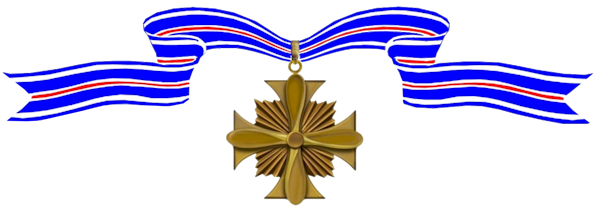Thomas Parrott was interned as a Prisoner of War in North Vietnam after he was shot down on August 12, 1967, and was held until his release on March 14, 1973.

–
Cemetery:
Awards Received
-

Silver Star
-

Bronze Star Medal
-

Prisoner of War Medal
-

Legion of Merit
-

Silver Star
-
Silver Star
Service:
United States Air ForceRank:
MajorDivision:
Prisoner of War (North Vietnam)Action Date:
July – September 1968
The President of the United States of America, authorized by Act of Congress, July 8, 1918 (amended by act of July 25, 1963), takes pleasure in presenting a Bronze Oak Leaf Cluster in lieu of a Second Award of the Silver Star to Major Thomas Vance Parrott (AFSN: FV-3103992), United States Air Force, for gallantry and intrepidity in action in connection with military operations against an opposing armed force during the period from July 1968 to September 1968, while a Prisoner of War in North Vietnam. Ignoring international agreements on treatment of prisoners of war, the enemy resorted to mental and physical cruelties to obtain information, confessions, and propaganda materials. Major Parrott resisted their demands by calling upon his deepest inner strengths in a manner which reflected his devotion to duty and great credit upon himself and the United States Air Force.
-
Bronze Star Medal
Service:
United States Air ForceRank:
MajorDivision:
Prisoner of War (North Vietnam)Action Date:
January 1968 – December 1969
The President of the United States of America, authorized by Executive Order 11046, 24 August 1962, takes pleasure in presenting the Bronze Star Medal with Combat “V” to Major Thomas Vance Parrott (AFSN: FV-3103992), United States Air Force, for heroic achievement as a Prisoner of War while engaged in operations against an opposing armed force in North Vietnam during the period January 1968 to December 1969. In an atmosphere of enemy harassment and brutal treatment, he continued to establish and maintain communications through unusual and ingenious methods, which resulted in American and Allied prisoners presenting a posture of increased resistance to the enemy’s wishes, and, at the same time, improving prisoner morale. By his heroic endeavors and devotion to duty under adverse conditions of his environment, he reflected great credit upon himself and upheld the highest traditions of the United States Air Force.
-
Prisoner of War Medal
Service:
United States Air ForceRank:
MajorDivision:
Prisoner of War (North Vietnam)Action Date:
August 12, 1967 – March 14, 1973
Major Thomas Vance Parrott (AFSN: FV-3103992), United States Air Force, was held as a Prisoner of War in North Vietnam from August 12, 1967 until his release on March 14, 1973.
-
Legion of Merit
Service:
United States Air ForceRank:
MajorDivision:
Prisoner of War (North Vietnam)Action Date:
August 1967 – August 1970
The President of the United States of America, authorized by Act of Congress, 20 July 1942, takes pleasure in presenting the Legion of Merit to Major Thomas Vance Parrott (AFSN: FV-3103992), United States Air Force, for exceptionally meritorious conduct in the performance of outstanding services to the Government of the United States as a Prisoner of War in North Vietnam from August 1967 to August 1970. His ceaseless efforts, by a continuous showing of resistance to an enemy who ignored all international agreements on treatment of Prisoners of War, in the extremely adverse conditions of the communist prisons of North Vietnam, demonstrated his professional competence, unwavering devotion, and loyalty to his country. Despite the harsh treatment through his long years of incarceration, he continued to perform his duties in a clearly exceptional manner which reflected great credit upon himself and the United States Air Force.
-
Silver Star
Service:
United States Air ForceRank:
CaptainBatallion:
11th Tactical Reconnaissance SquadronRegiment:
432d Tactical Reconnaissance WingDivision:
Udorn Royal Thai Air Base, ThailandAction Date:
August 12, 1967
The President of the United States of America, authorized by Act of Congress, July 8, 1918 (amended by act of July 25, 1963), takes pleasure in presenting the Silver Star to Captain Thomas Vance Parrott (AFSN: FV-3103992), United States Air Force, for gallantry in connection with military operations against an opposing armed force while serving as Navigator of an RF-4C aircraft of the 11th Tactical Reconnaissance Squadron, 432d Tactical Reconnaissance Wing, Udorn Royal Thai Air Base, Thailand, in action in North Vietnam, on 12 August 1967. On that date, Captain Parrott navigated an RF-4C reconnaissance aircraft to obtain photographic coverage of the priority one target deep within hostile territory. With complete disregard for his safety, Captain Parrott would have had to navigate his aircraft through intense anti-aircraft fire and missile attack, to obtain the desired photographic reconnaissance coverage. By his gallantry and devotion to duty, Captain Parrott has reflected great credit upon himself and the United States Air Force.


